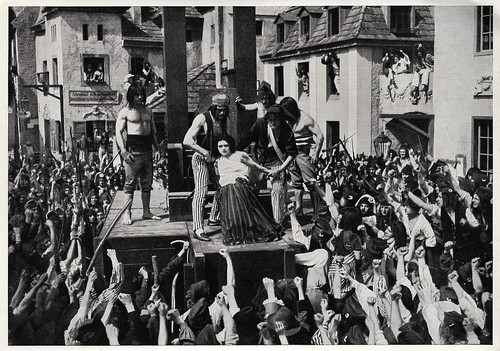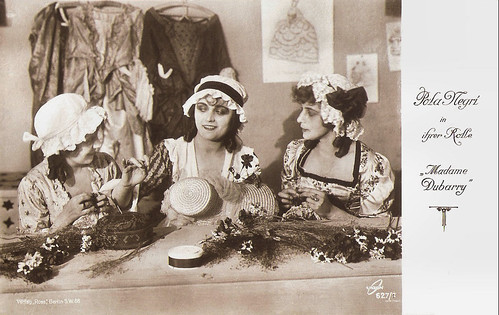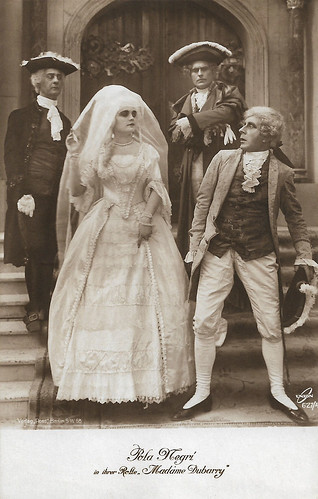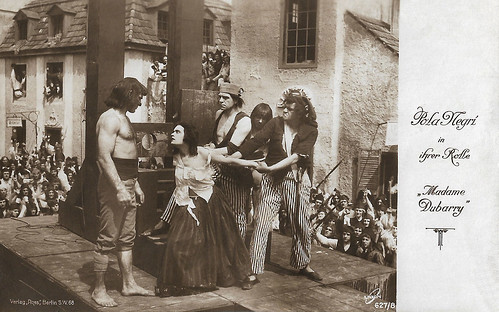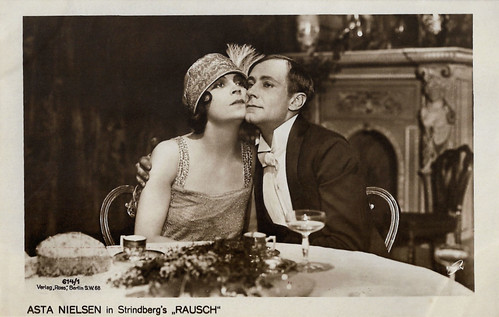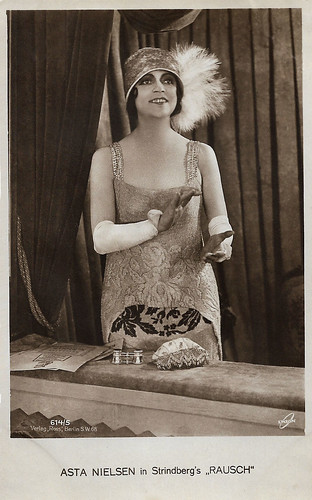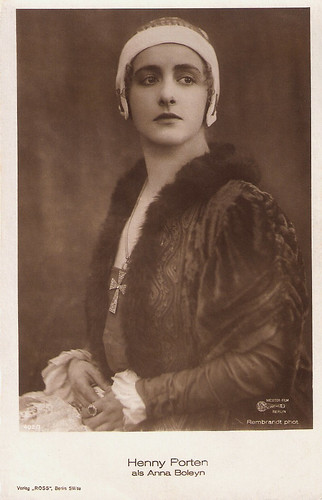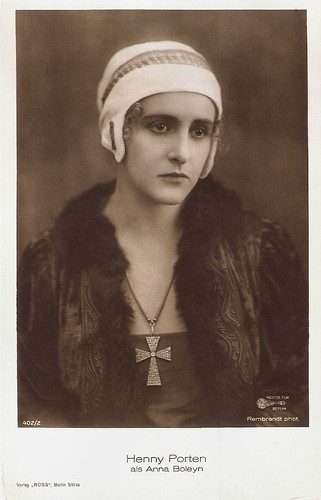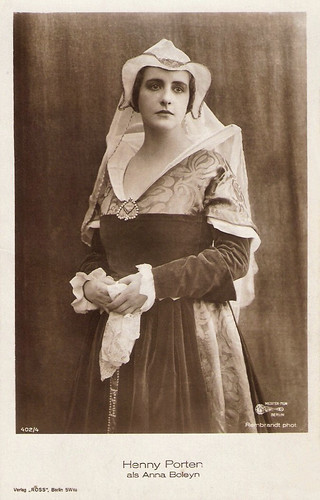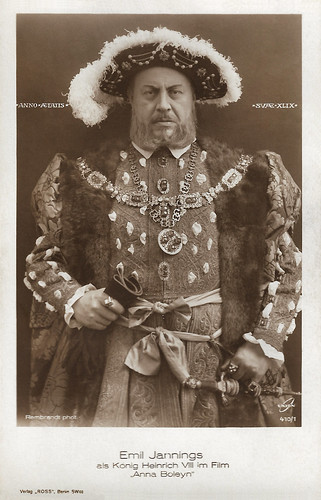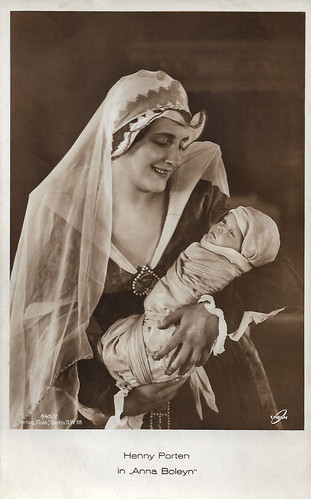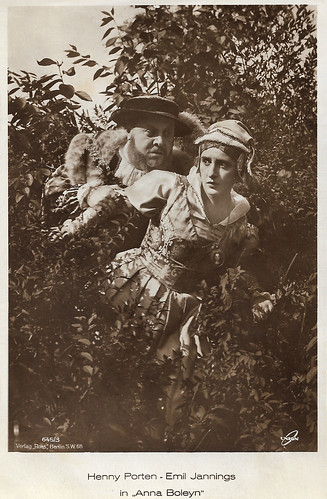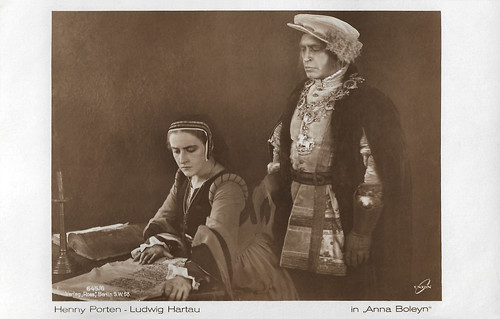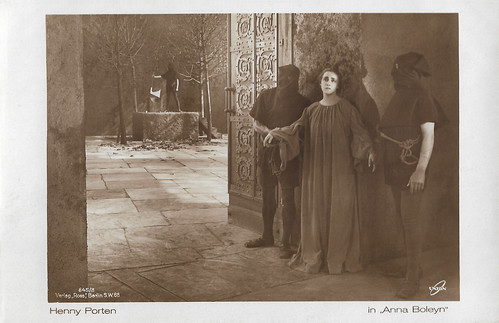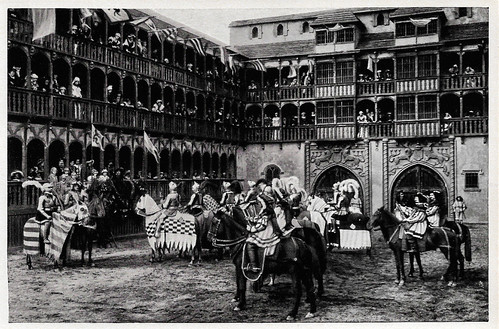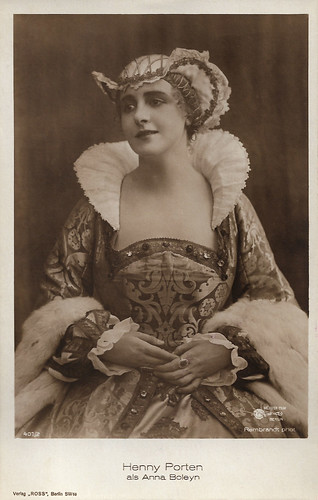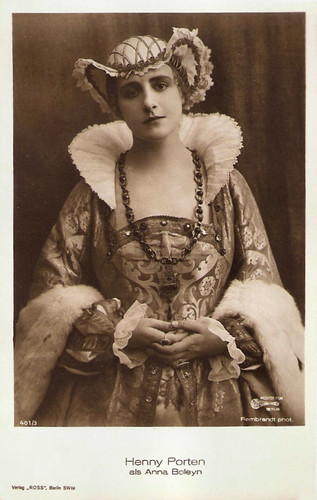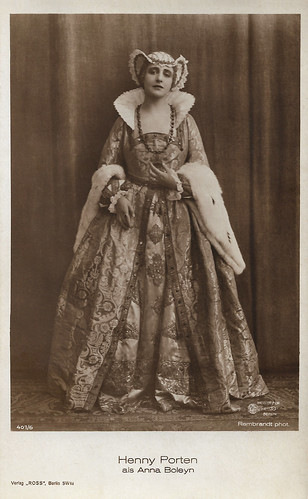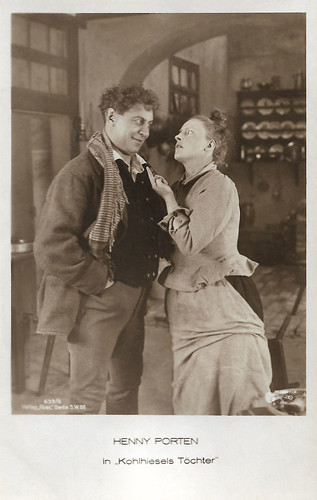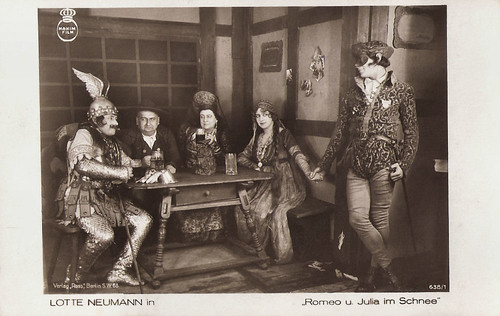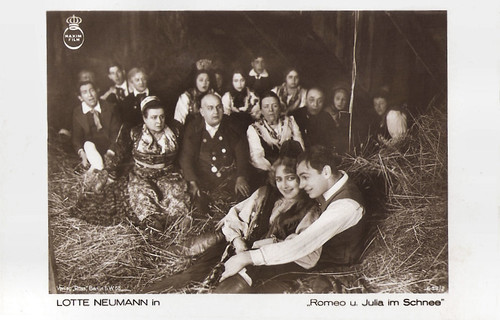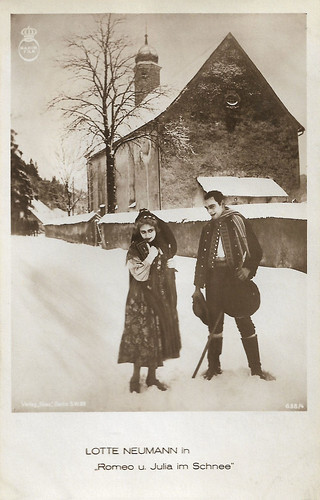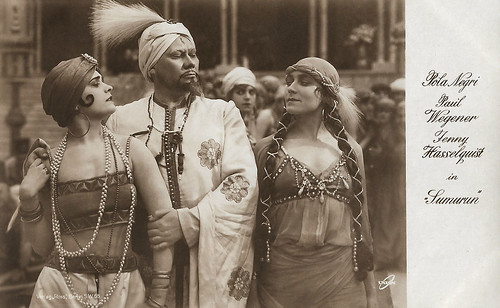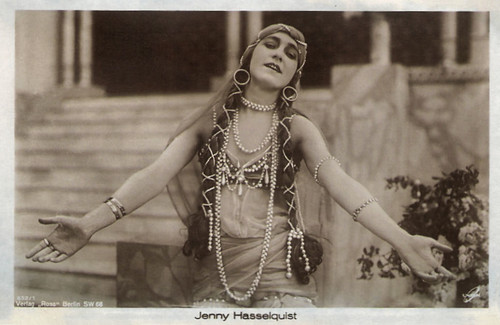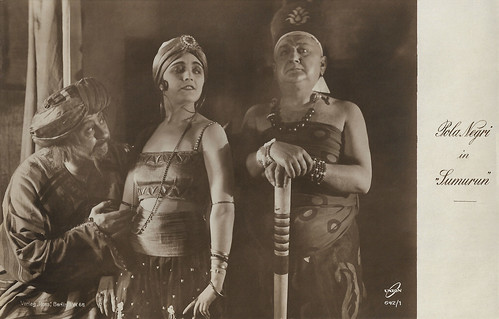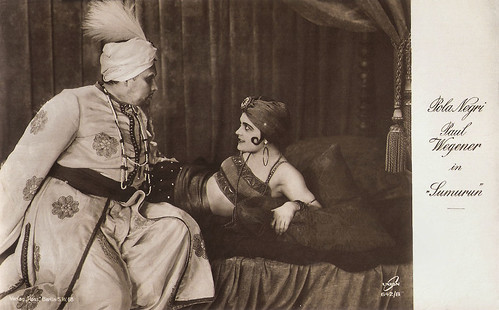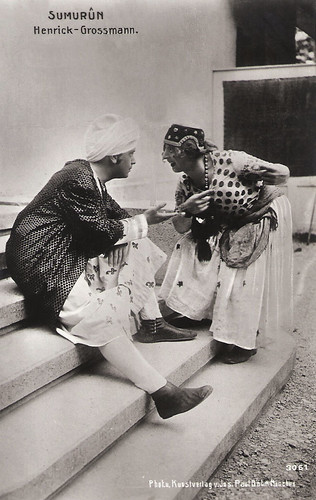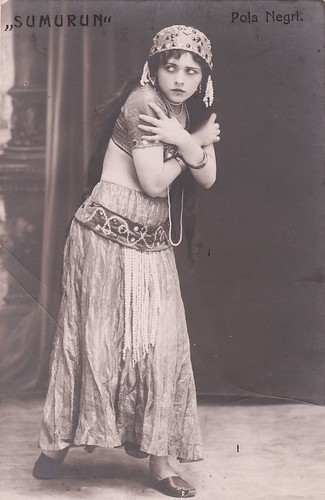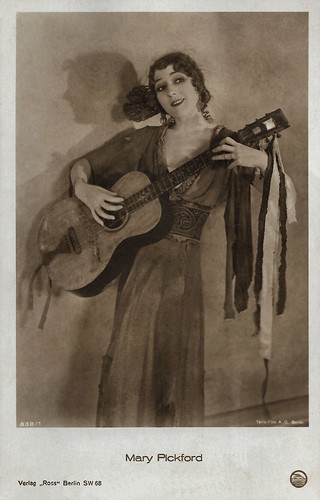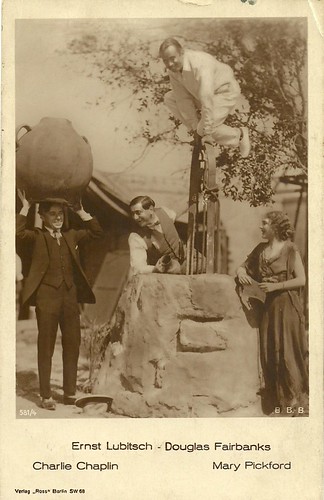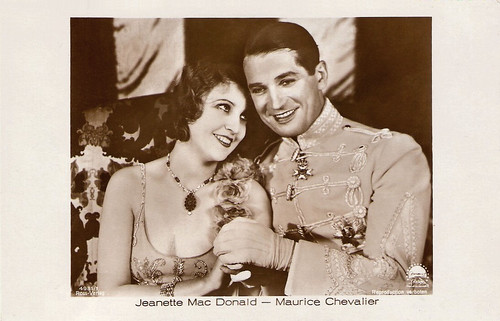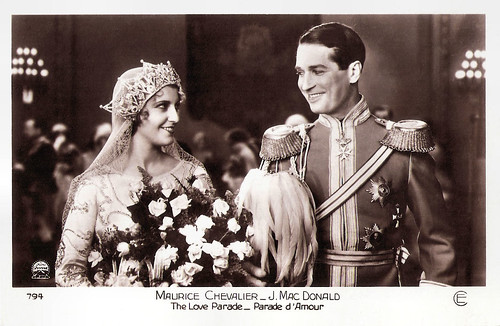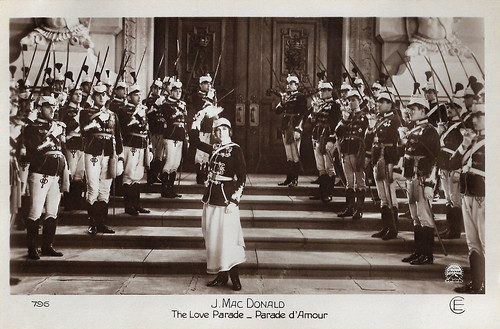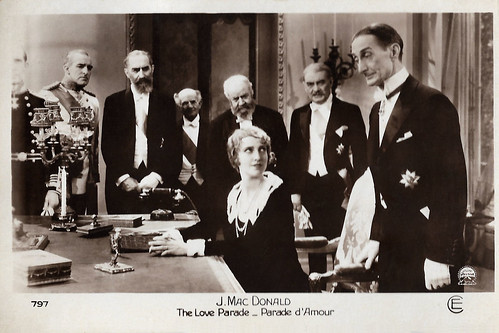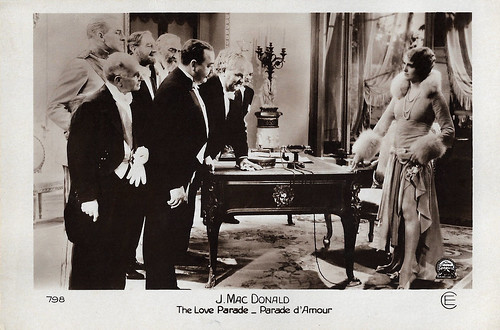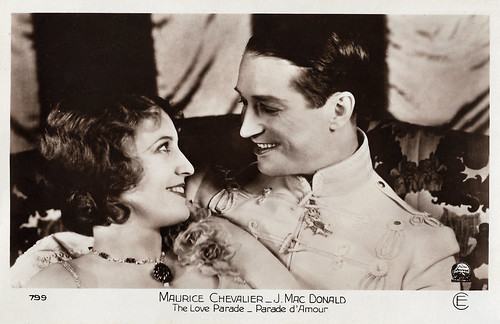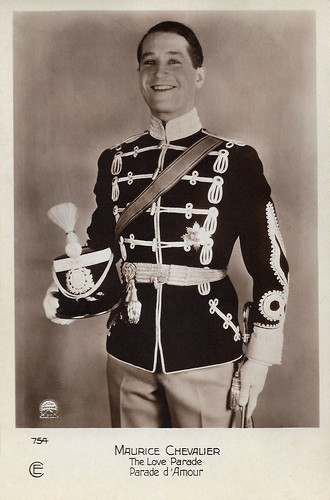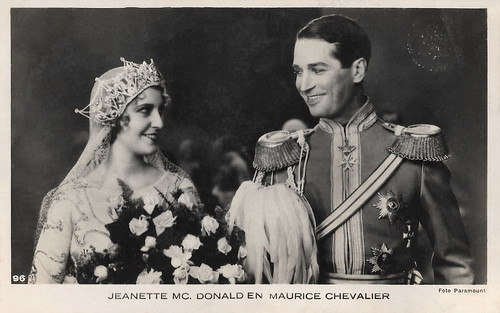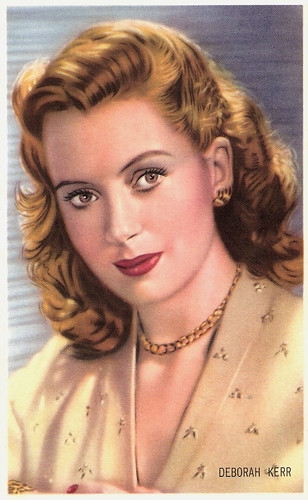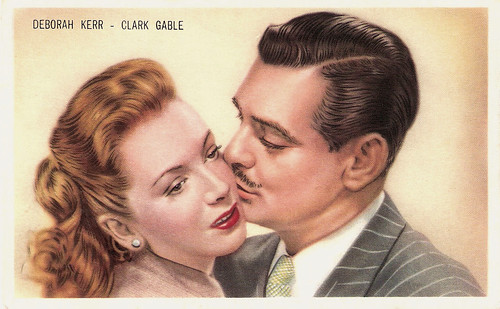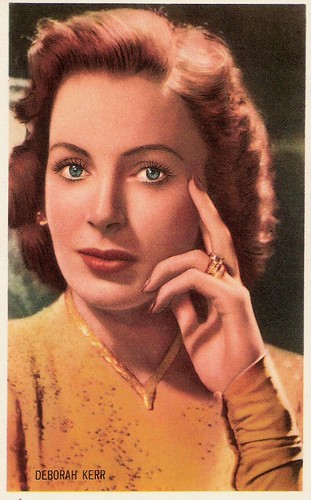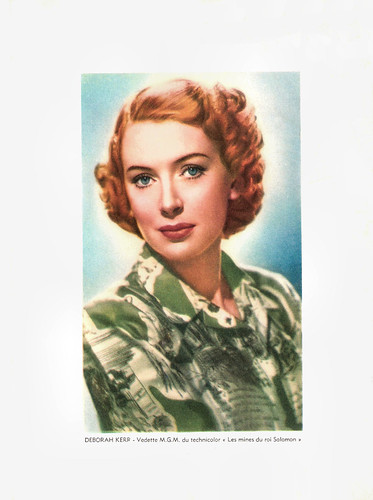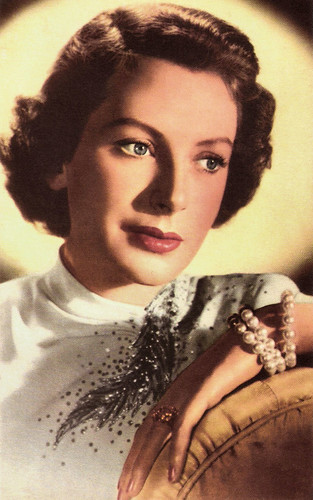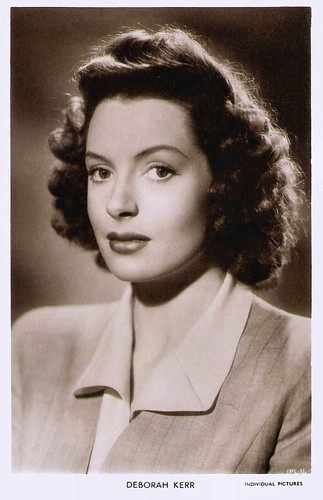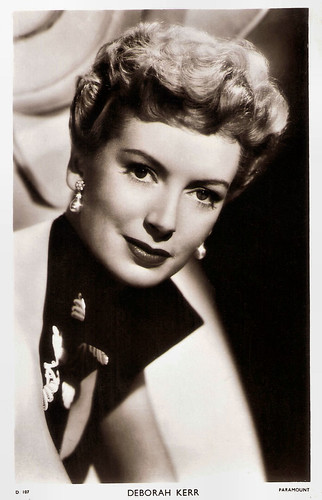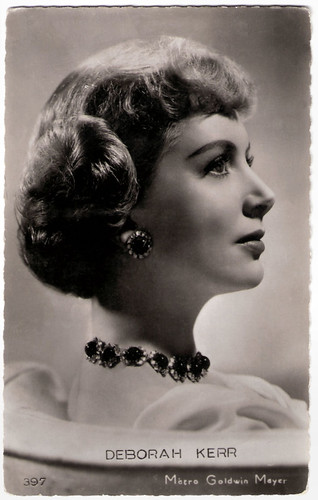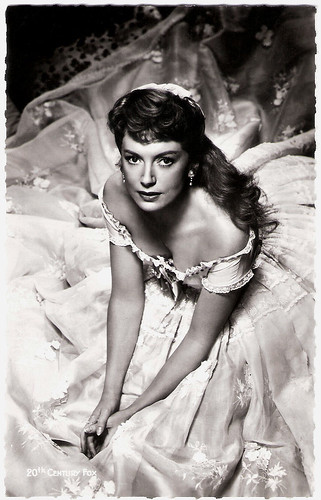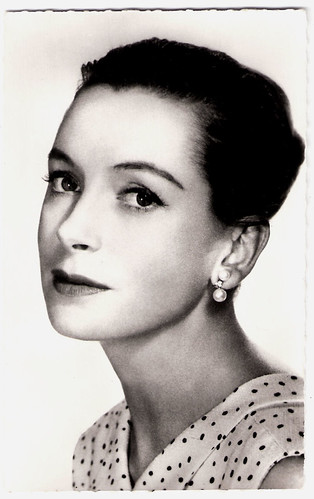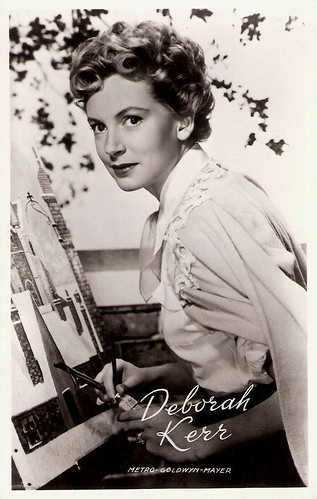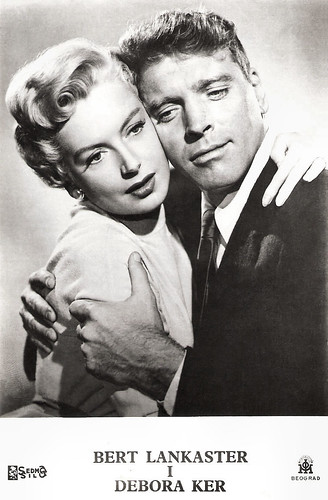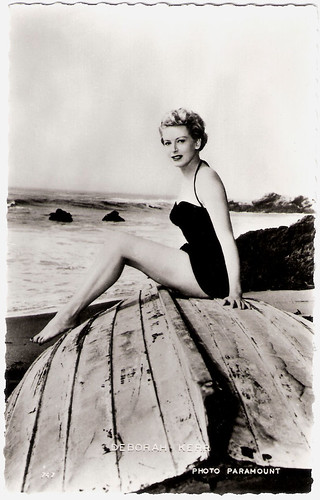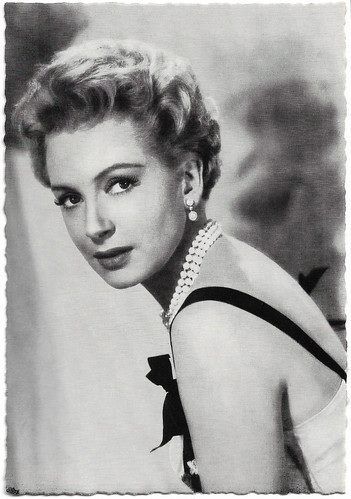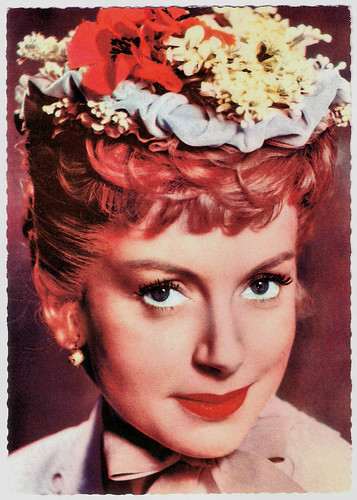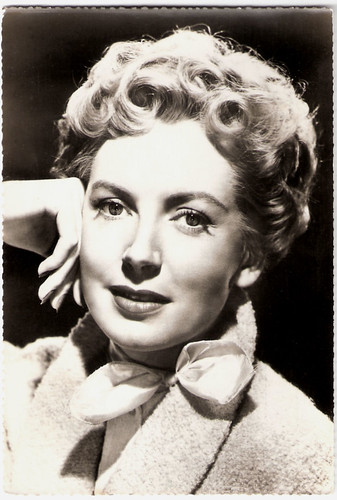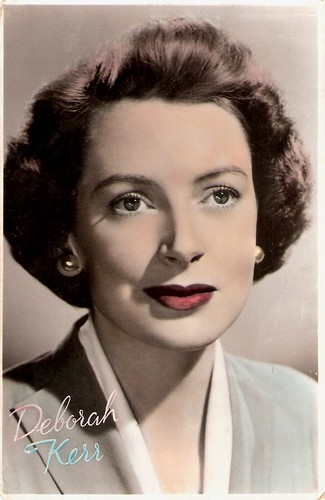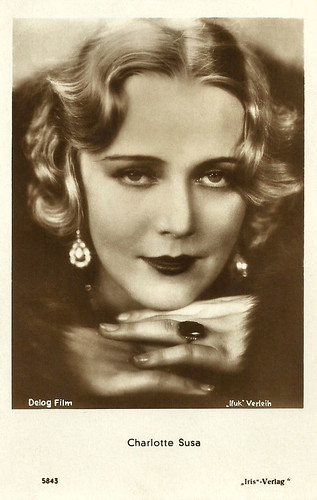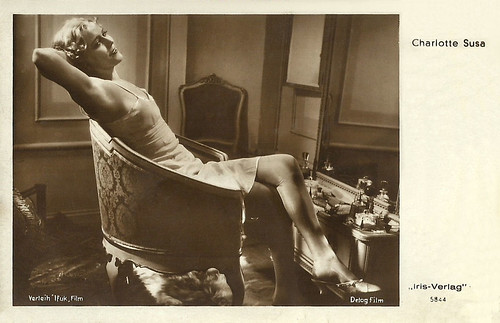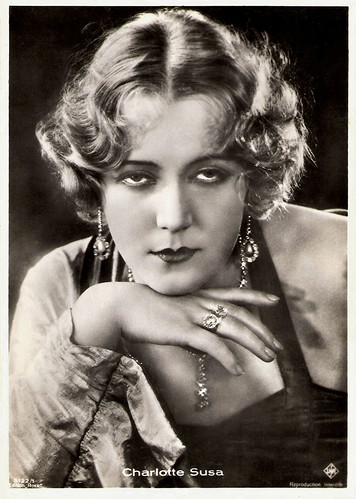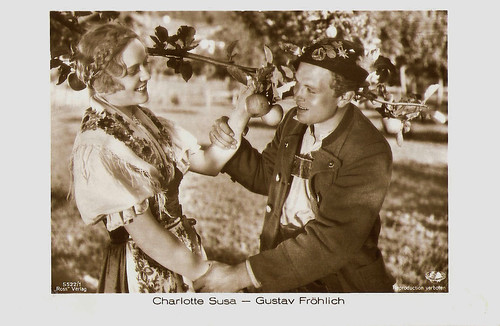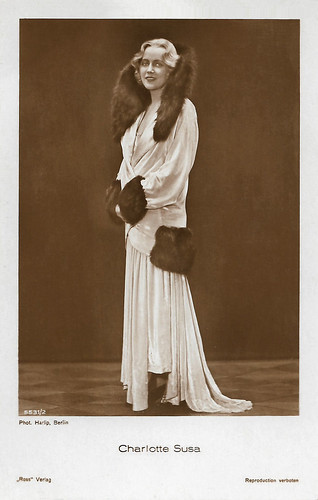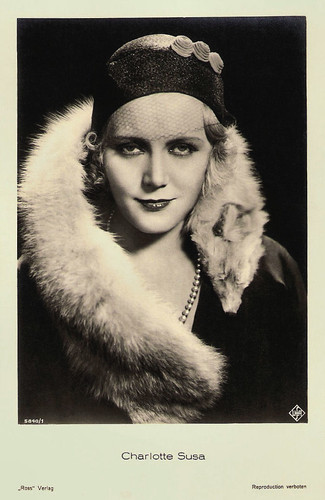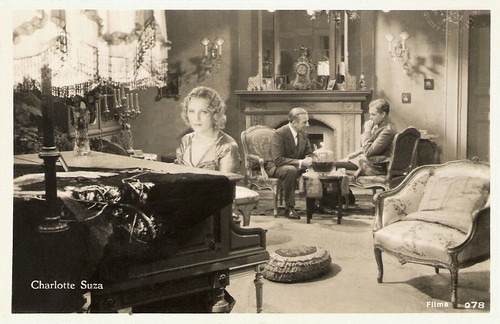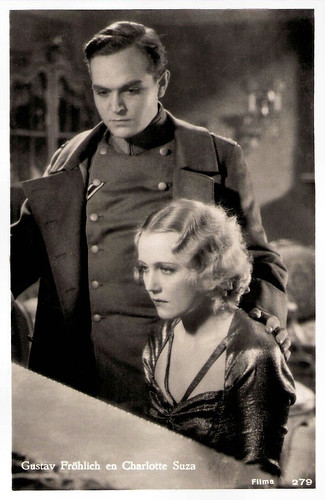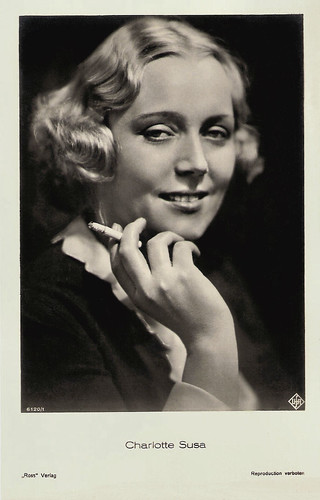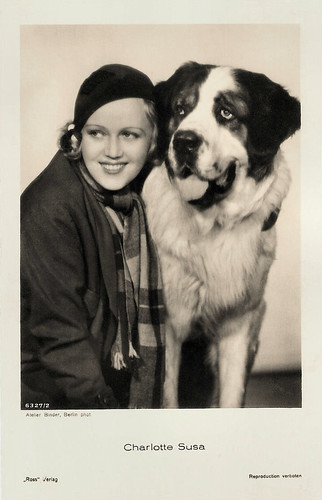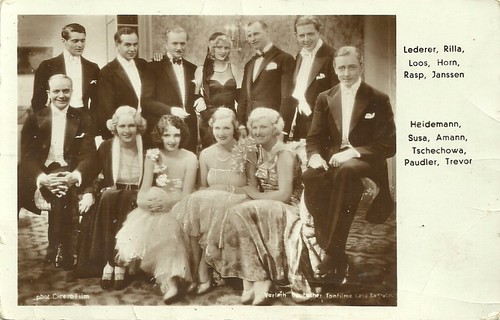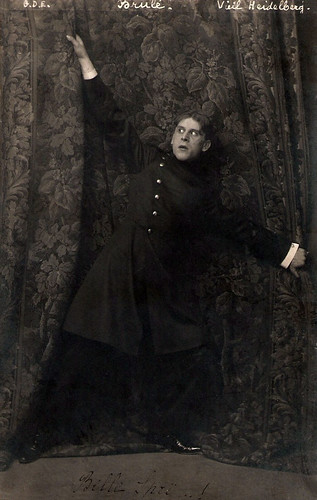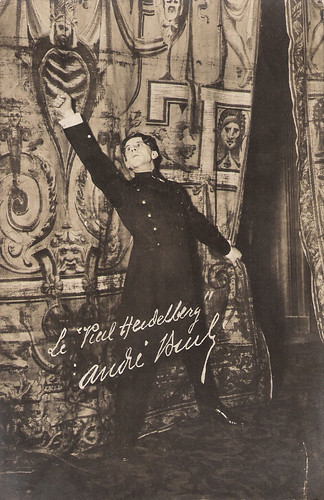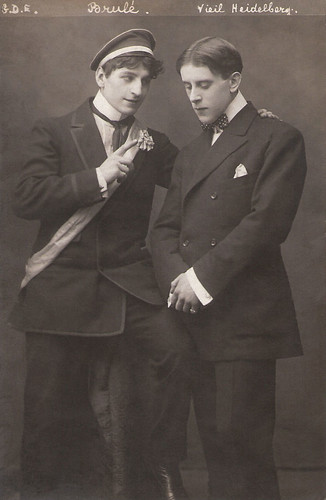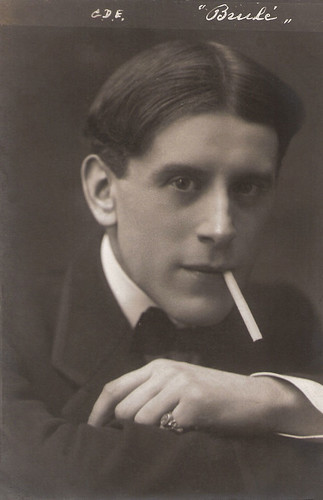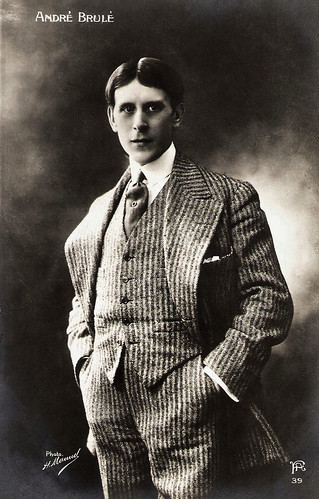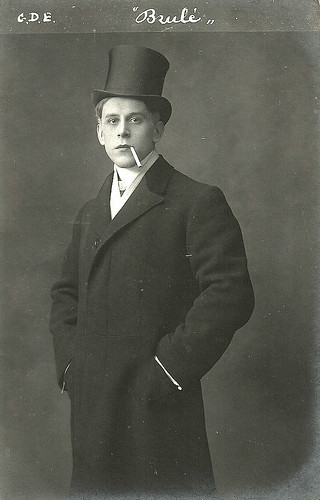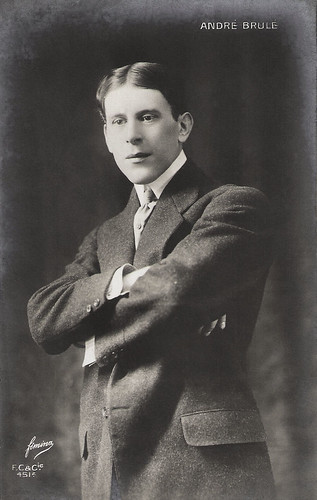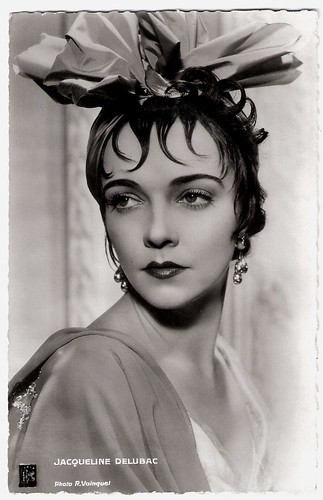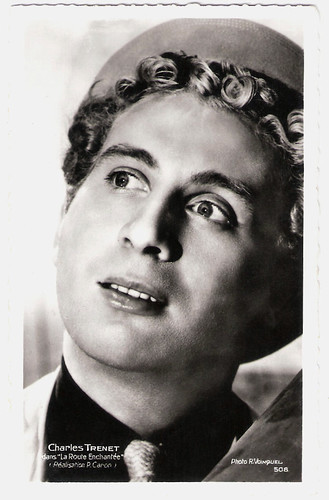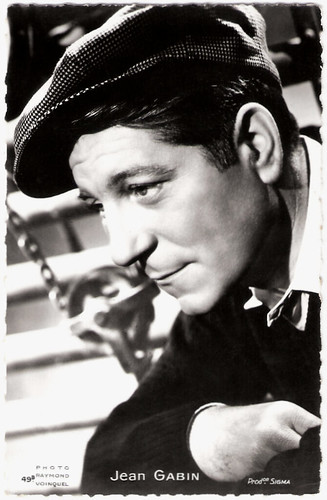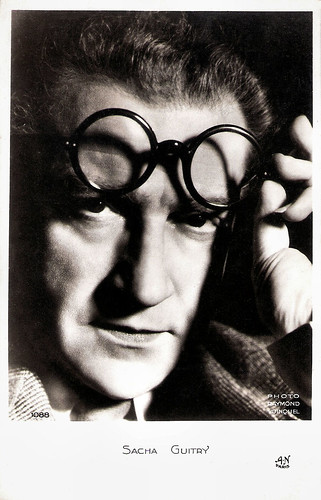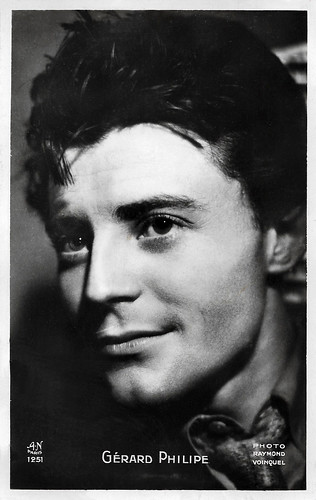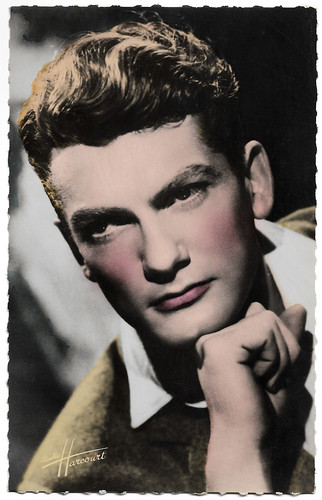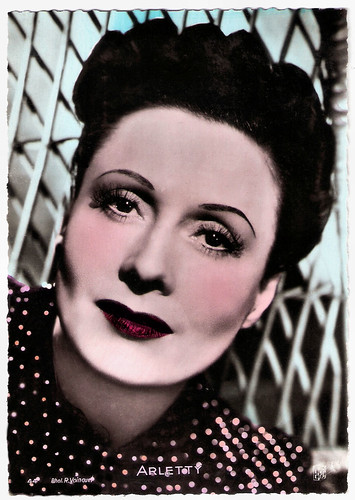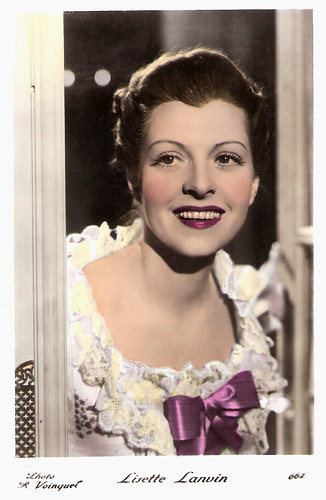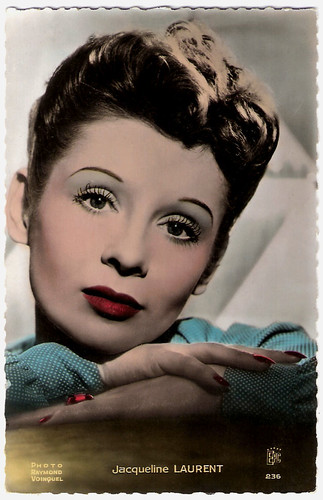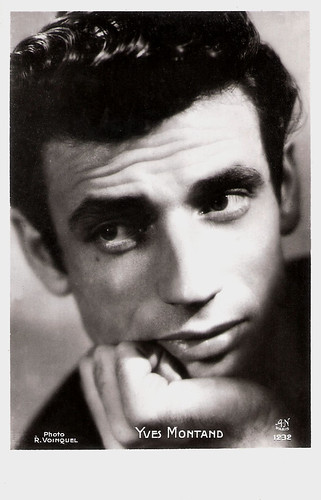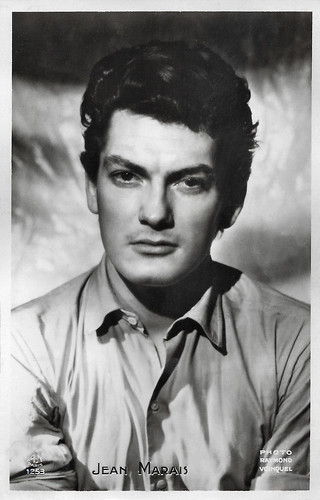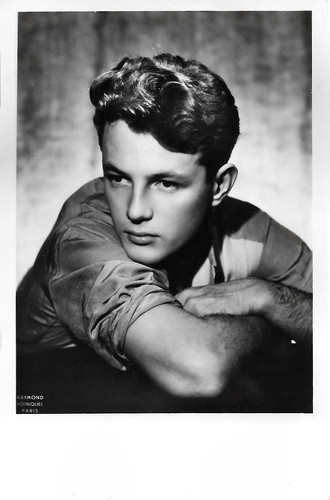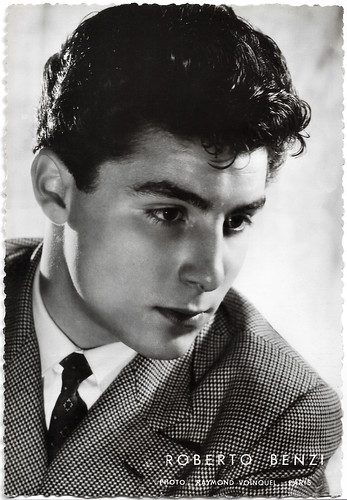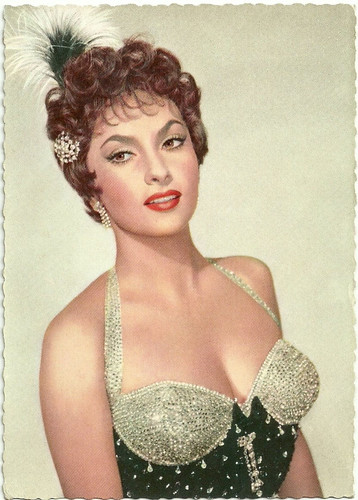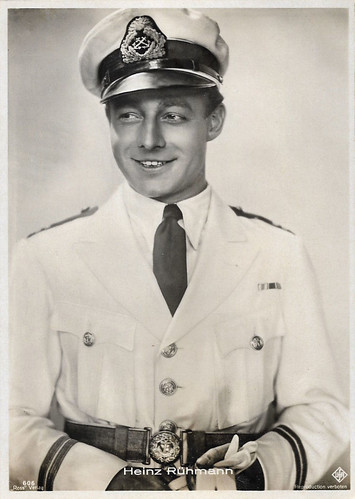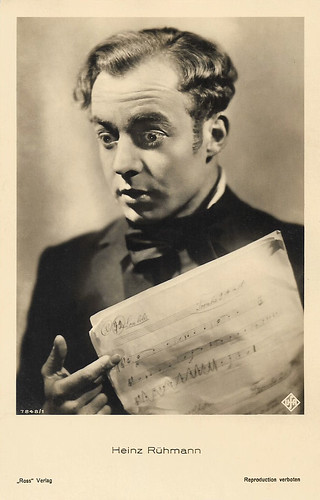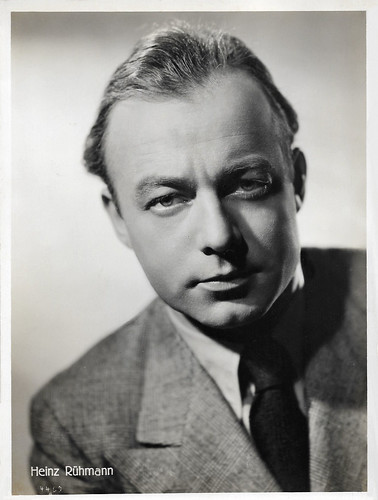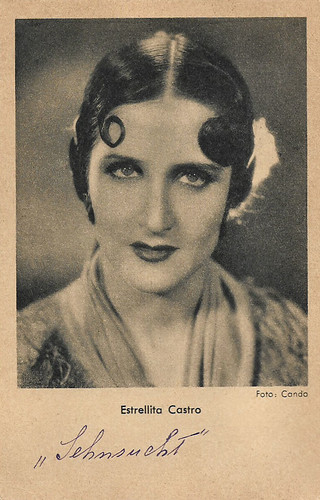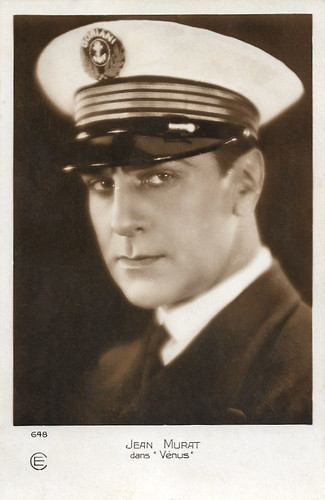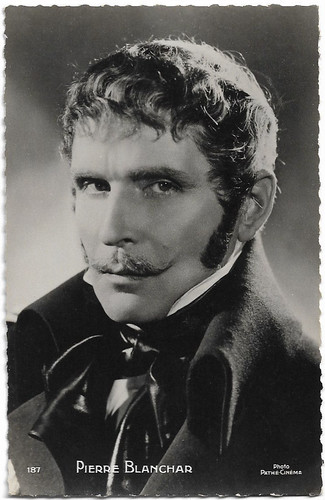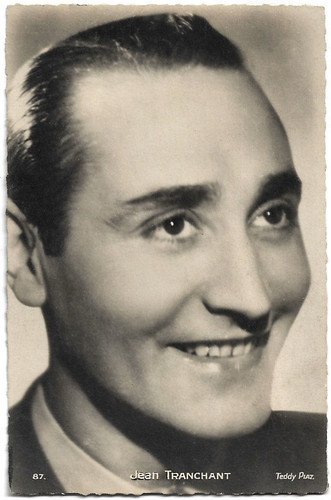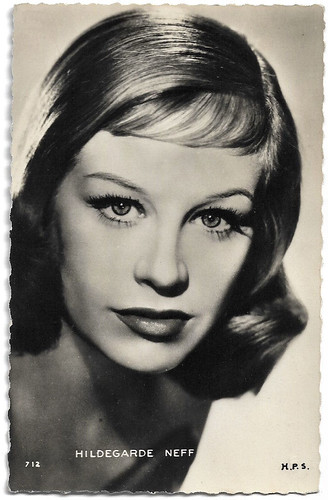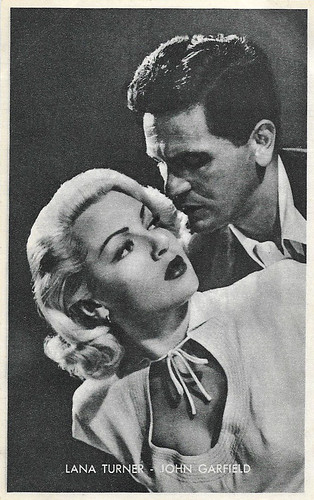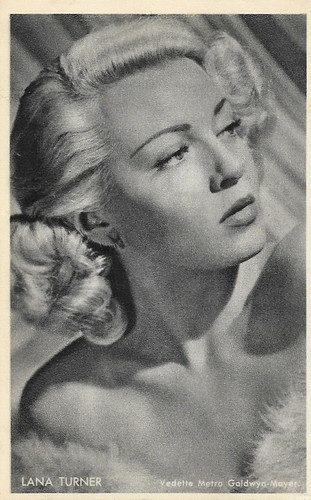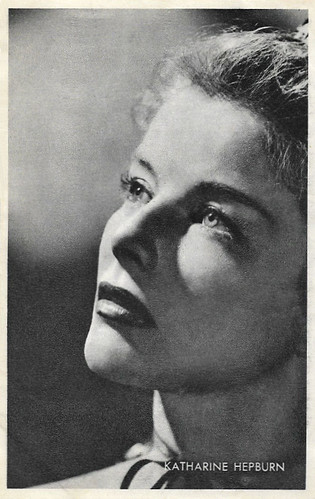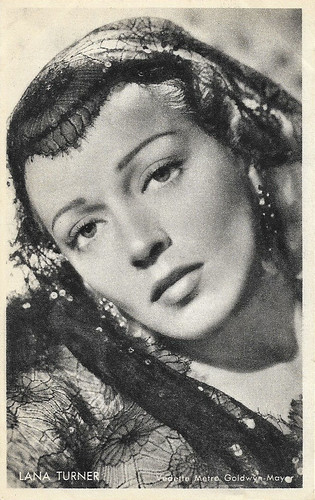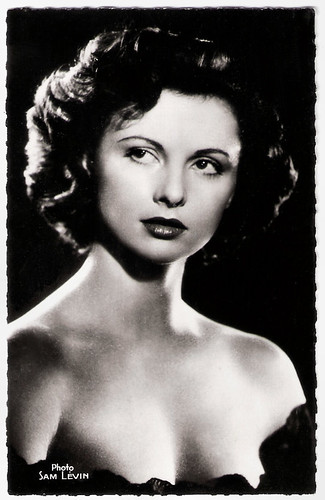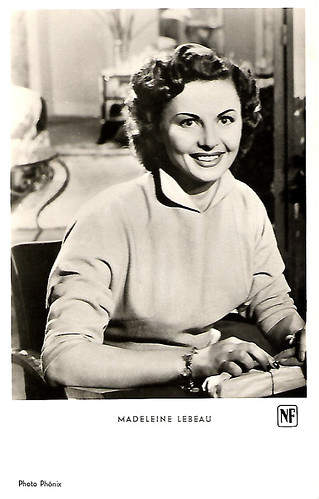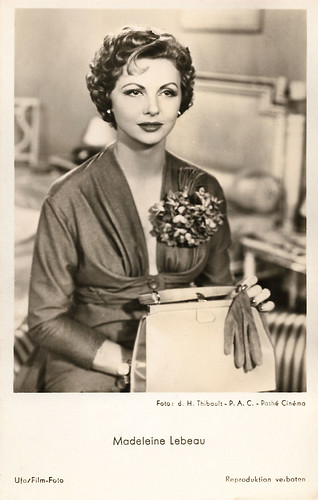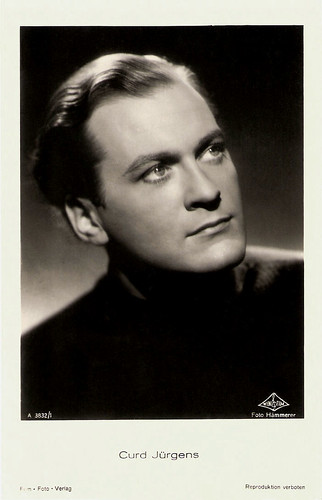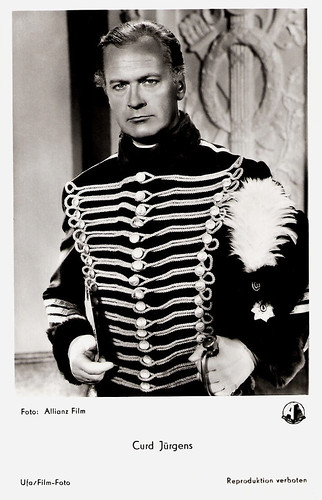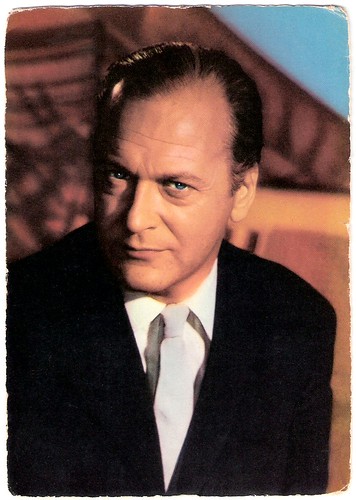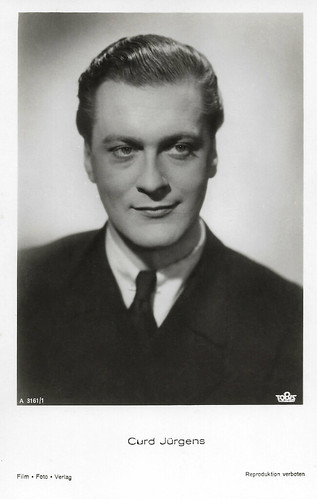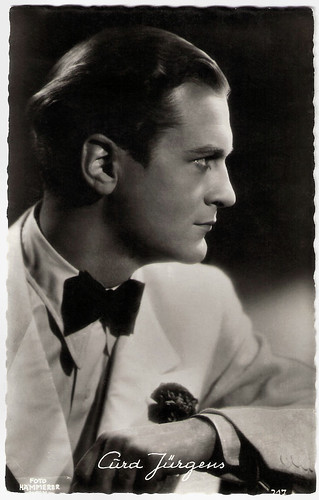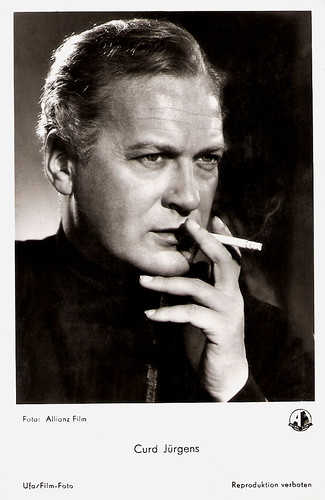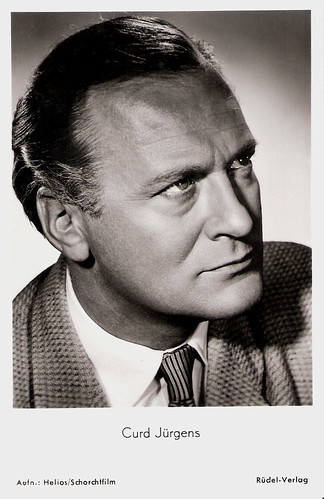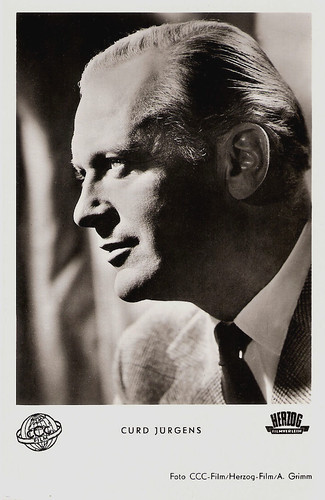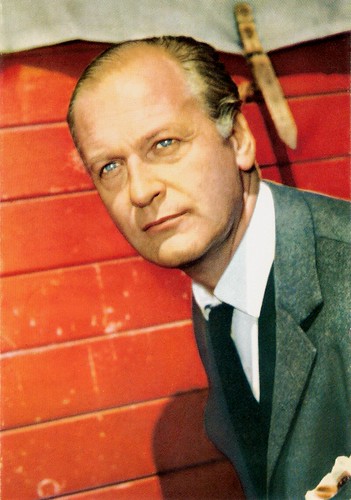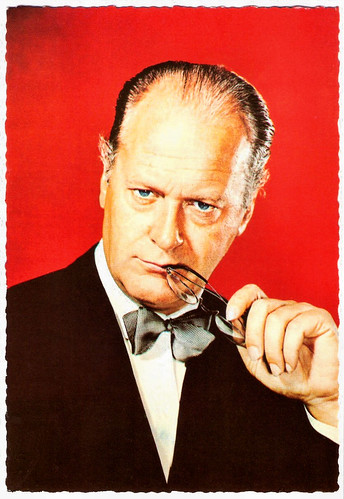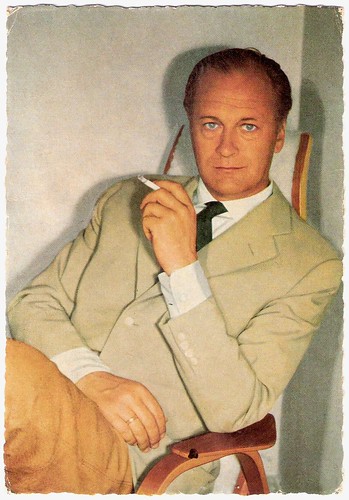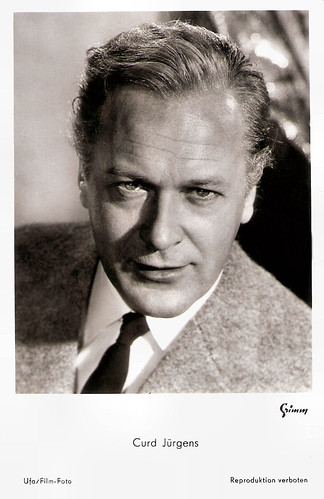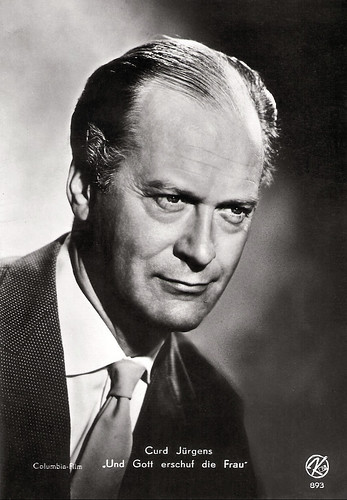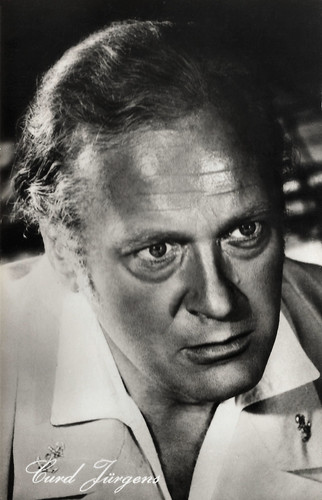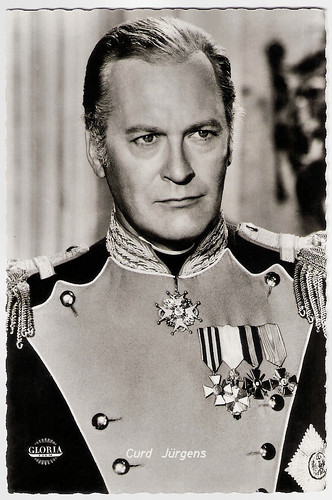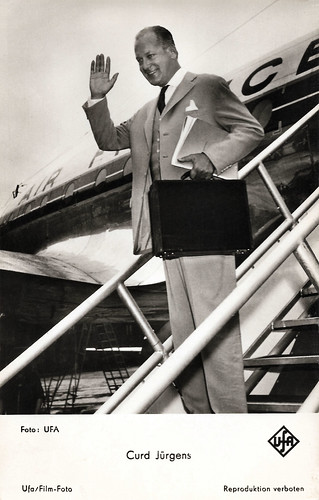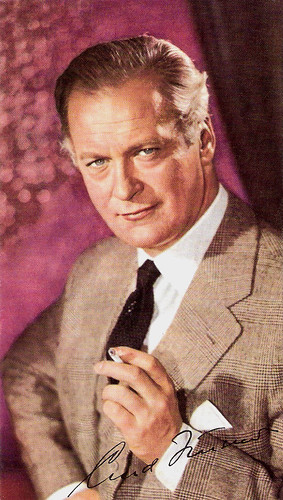Ernst Lubitsch's Die Puppe/The Doll (1919) is a romantic fantasy, starring Ossi Oswalda. This charming film is loosely based on the short story by E.T.A. Hoffmann, which also inspired the ballet Coppélia. The great charm of Die Puppe is its mood of fairy-tale unreality.
![Ossi Oswalda and Hermann Thimig in Die Puppe (1919)]()
German collectors card by Ross Verlag in the series Vom Werden deutscher Filmkunst - Der Stumme Film, picture no. 117, group 39. Photo: Union. Publicity still for Die Puppe/The Doll (Ernst Lubitsch, 1919). Caption: With Die Puppe/The Doll, Lubitsch created a completely new type of comedy for the screen.
![Hermann Thimig and Ossi Oswalda in Die Puppe (1919)]()
German collectors card by Ross Verlag in the series Vom Werden Deutscher Filmkunst - Der Stumme Film, no. 164, Group 40. Photo: Ufa. Publicity still for Die Puppe/The Doll (Ernst Lubitsch, 1919). Caption: From the film Die Puppe. Trick shot. Ossi Oswalda appears in Hermann Thimig's dream.
![Ernst Lubitsch, Ossi Oswalda]()
Ernst Lubitsch and Ossi Oswalda. German postcard by Ross Verlag, Berlin, no. 337/1, 1919-1924. Photo: Zander & Labisch.
In the opening shot of Die Puppe/The Doll,Ernst Lubitsch sets up a doll's house against a stylised backdrop. A close-up of this model then dissolves into a full-sized version of the same stylised setting, from which emerge actors dressed as dolls. From this point onward, the entire film is staged on highly stylised sets.
The old Baron von Chanterelle (Max Kronert) has no family except for his gormless nephew Lancelot (Hermann Thimig). He wants to preserve his family line, so he forces Lancelot to choose one of the village maidens to wed.
Lancelot flees to a monastery to escape the forty eager maidens. The Baron offers his nephew a dowry of 300,000 francs to get married. But Lancelot is afraid of women.
The prior (Jacob Tiedtke) shows him an advertisement from the doll-maker Hilarius (Victor Janson), who offers a special service 'for bachelors, widowers and misogynists': a life-size clockwork girl! Lancelot decides to marry the mechanical bride, collect the dowry, then stash the doll in the attic.
Hilarius has just finished making a replica of his pretty daughter Ossi (Ossi Oswalda). The clockwork girl has a control panel on her back and a crank to wind her up.
The doll-maker's young apprentice (Gerhard Ritterband) accidentally breaks the arm of the doll and convinces the real Ossi to mimic the doll. Lancelot buys her, thinking she is a doll, and takes her back to the monastery, where they are wed.
Ernst Lubitsch once wrote to his biographer Herman G. Weinberg that he considered Die Puppe and Die Austernprinzessin/The Oyster Princess (1919) as his most outstanding comedies produced in Germany before he departed for Hollywood to make Rosita (1923).
The great charm of Die Puppe is its mood of fairy-tale unreality. The coachman's horses are played by men in pantomime-horse costumes. A cat and a rooster are played by cut-out figures. The moon has a human face.
![Ossi Oswalda in Die Puppe (1919)]()
German postcard by Ross Verlag, Berlin, no. 635/3 1919-1924. Photo: Union. Publicity still for Die Puppe/The Doll (Ernst Lubitsch, 1919) with Ossi Oswalda
![Ossi Oswalda and Hermann Thimig in Die Puppe]()
German postcard by Ross Verlag, Berlin, no. 635/4 1919-1924. Photo: Union. Publicity still for Die Puppe/The Doll (Ernst Lubitsch, 1919) with Ossi Oswalda and Hermann Thimig.
![Ossi Oswalda and Hermann Thimig in Die Puppe]()
German postcard by Ross Verlag, Berlin, no. 635/5 1919-1924. Photo: Union. Publicity still for Die Puppe/The Doll (Ernst Lubitsch, 1919) with Ossi Oswalda and Hermann Thimig.
![Ossi Oswalda in Die Puppe (1919)]()
German postcard by Ross Verlag, Berlin, no. 635/6. Photo: Union. Ossi Oswalda in Die Puppe/The Doll (Ernst Lubitsch, 1919).
Sources: Will Gilbert (IMDb), Wikipedia and IMDb.

German collectors card by Ross Verlag in the series Vom Werden deutscher Filmkunst - Der Stumme Film, picture no. 117, group 39. Photo: Union. Publicity still for Die Puppe/The Doll (Ernst Lubitsch, 1919). Caption: With Die Puppe/The Doll, Lubitsch created a completely new type of comedy for the screen.

German collectors card by Ross Verlag in the series Vom Werden Deutscher Filmkunst - Der Stumme Film, no. 164, Group 40. Photo: Ufa. Publicity still for Die Puppe/The Doll (Ernst Lubitsch, 1919). Caption: From the film Die Puppe. Trick shot. Ossi Oswalda appears in Hermann Thimig's dream.

Ernst Lubitsch and Ossi Oswalda. German postcard by Ross Verlag, Berlin, no. 337/1, 1919-1924. Photo: Zander & Labisch.
A special service for bachelors, widowers and misogynists
In the opening shot of Die Puppe/The Doll,Ernst Lubitsch sets up a doll's house against a stylised backdrop. A close-up of this model then dissolves into a full-sized version of the same stylised setting, from which emerge actors dressed as dolls. From this point onward, the entire film is staged on highly stylised sets.
The old Baron von Chanterelle (Max Kronert) has no family except for his gormless nephew Lancelot (Hermann Thimig). He wants to preserve his family line, so he forces Lancelot to choose one of the village maidens to wed.
Lancelot flees to a monastery to escape the forty eager maidens. The Baron offers his nephew a dowry of 300,000 francs to get married. But Lancelot is afraid of women.
The prior (Jacob Tiedtke) shows him an advertisement from the doll-maker Hilarius (Victor Janson), who offers a special service 'for bachelors, widowers and misogynists': a life-size clockwork girl! Lancelot decides to marry the mechanical bride, collect the dowry, then stash the doll in the attic.
Hilarius has just finished making a replica of his pretty daughter Ossi (Ossi Oswalda). The clockwork girl has a control panel on her back and a crank to wind her up.
The doll-maker's young apprentice (Gerhard Ritterband) accidentally breaks the arm of the doll and convinces the real Ossi to mimic the doll. Lancelot buys her, thinking she is a doll, and takes her back to the monastery, where they are wed.
Ernst Lubitsch once wrote to his biographer Herman G. Weinberg that he considered Die Puppe and Die Austernprinzessin/The Oyster Princess (1919) as his most outstanding comedies produced in Germany before he departed for Hollywood to make Rosita (1923).
The great charm of Die Puppe is its mood of fairy-tale unreality. The coachman's horses are played by men in pantomime-horse costumes. A cat and a rooster are played by cut-out figures. The moon has a human face.
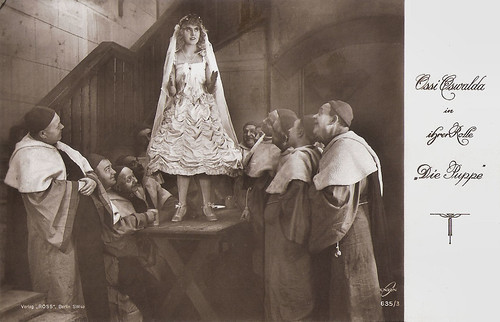
German postcard by Ross Verlag, Berlin, no. 635/3 1919-1924. Photo: Union. Publicity still for Die Puppe/The Doll (Ernst Lubitsch, 1919) with Ossi Oswalda
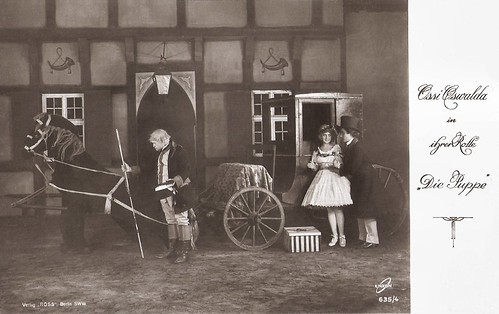
German postcard by Ross Verlag, Berlin, no. 635/4 1919-1924. Photo: Union. Publicity still for Die Puppe/The Doll (Ernst Lubitsch, 1919) with Ossi Oswalda and Hermann Thimig.
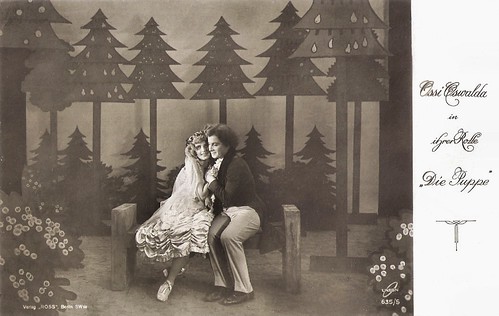
German postcard by Ross Verlag, Berlin, no. 635/5 1919-1924. Photo: Union. Publicity still for Die Puppe/The Doll (Ernst Lubitsch, 1919) with Ossi Oswalda and Hermann Thimig.
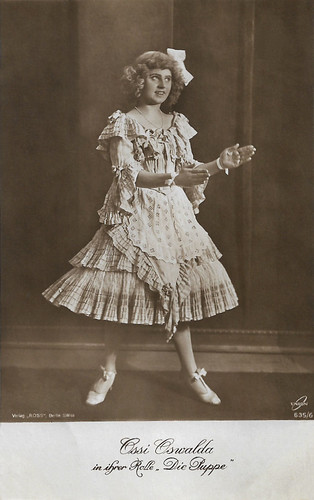
German postcard by Ross Verlag, Berlin, no. 635/6. Photo: Union. Ossi Oswalda in Die Puppe/The Doll (Ernst Lubitsch, 1919).
Sources: Will Gilbert (IMDb), Wikipedia and IMDb.
